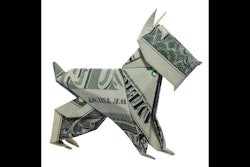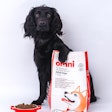
E-commerce gained a significant boost from the COVID-19 pandemic, with conditions leading more people than ever before all around the world to either begin shopping online or increase their current online shopping habits. According to consumers, these new habits might just stick — according to a November 2021 survey by the American Pet Products Association (APPA), 22% of U.S. pet owners said that even post-pandemic they plan to continue purchasing pet food, treats and other supplies online and having them shipped to their homes. While that’s slightly down from the 26% who said they’re currently buying online and taking advantage of home delivery, there are also the 12% who plan to browse in a store then purchase online and the 7% who plan to browse online first then go to a store to buy what they’ve found.
What does this mean for pet brands? More potential and current customers than ever before are patrons of e-commerce at some point in the shopping process, and it’s important to be where they’re at. But how?
What e-commerce has done to branding strategy
“Ecommerce has standardized how products are sold,” said Nicole Donoghue, senior vice president of account management for Trone, a pet and animal health marketing agency. “There’s a product details section, image section, quantity/price section, review section, etc. Online shoppers are conditioned to scroll for more details and click for more images when they are drawn in by billboard-style packaging and interested in learning more.”
That standardization helps with expectations, but how can someone stand out with cookie-cutter branding constraints online?
“Brand expression comes through the packaging, obviously — making the logo, making the name bigger, giving the package itself a more standout look and feel — but I think the digital ads that people are running, either themselves or through PetSmart, Walmart, Amazon, etc., the brand expression has jumped over to those digital ads,” said Stefan Hartung, executive creative director for Ideas That Kick, a brand strategy, branding and design agency. “So the overall marketing and branding campaigns have to work so closely together that it becomes one strong brand unit. It's easy to do that from a design point. You have color, you have fonts, shades, photos illustrations … the harder thing is, how do you get across an idea that separates you from the competition? The product itself is not the differentiator anymore. It’s the brand story behind it.”
Challenges and pitfalls to digital branding
Adjusting from print packaging, which provides more (and physical) real estate, to digital packaging, which may show up in a small square on a customer’s computer screen (or phone!), can provide challenges, especially if you’re expecting to be able to cut-and-paste from one medium to the other. According to Donoghue, the most common stumbling blocks typically seen in digital packaging are:
- Uploading images of cluttered retail packaging
- Low image quality
- Not making use of multiple image tiles to display the product and benefits
- Expecting viewers to zoom in and read long copy
“When designing a package for e-commerce, the primary thing you need to think about is how to keep it simple,” said Donoghue. “What can you cut? What content is already represented on the site? Things like product details, ingredients and what the company stands for are probably already displayed in the site content, so they don’t need to be on your digital package. Also, what can be featured in a second, third or fourth image tile? Icons, for instance, which would be tiny in the main thumbnail can be made the focus in a subsequent image tile.”
Another issue involves something that isn’t nearly as much of a concern in physical marketing: Inadvertently competing with yourself for advertising space.
“I think how others are competing with the big retailers out there buying up so much of the digital space (Amazon, Chewy, Walmart) [is a challenge] just because they spend so much money on advertising,” said Hartung. Brands existing on all the big e-commerce platforms for pet products may also want to drive traffic to their own e-commerce sites. “So if I’m going out there as a brand, if I want to do digital campaigns and I’m targeting audiences digitally I’m competing with myself,” he said. “Because Chewy might be pushing [the same thing] and they have more buying power than I do as a smaller brand. How do you get through the clutter? The biggest problem is you’re competing with the distributors of your brands.”
His solution? Be prepared with an umbrella strategy that involves plenty of nuance to adapt to different advertising platforms.
“I think people need to look at it as one overarching brand strategy to tell their story,” said Hartung. “What’s interesting is the nuances that you tell on the different pieces. If I go and I have packaging for regular food I’m talking about the overarching story, but I’m going nuanced on the ingredients and how they help the specific animal. And then you go to social media, and the nuances become more about the feeling and less about the products themselves. We are all sitting at home and working from home, and we want to interact with brands we actually like. It’s a great time for the pet food industry to tap into that.”
Cutting through the digital clutter
Overall, the online brand space may be just as cluttered as physical store shelves, so what’s a company to do? Get targeted and tell a story.
“I think the biggest thing is lead generation,” said Hartung. “Targeted ads to get to somebody. I think social media can help a ton, because the feeds people get of the things they’re interested in — the feeds on Instagram, YouTube, Facebook and TikTok serve you up so many things you’re interested in — there is that opportunity to create those digital ads in social media. Then once you tap into that you have your own social media piece that people want to follow because they realize there’s that story they want to connect to.”
The evolution to and of digital branding is still happening, which means there’s plenty of opportunity to be had.
“In an ever-changing digital environment, packaging for pet products will continue to evolve,” said Donoghue. “But it is refreshing to see how clean and beautiful packages can be when designed properly for small online spaces.”
3 trends for digital marketing in 2022
Adapted from “10 Trends for Digital Marketing in 2022,” Forbes.com, Dec. 16, 2021
- Foresight: Brands now have direct access to consumers, and don’t have to wait until after a product launch to get feedback. By feeling out their customer base beforehand, they can avoid controversy or potentially disastrous mistakes.
- Video: Video may become a cornerstone of well-rounded marketing campaigns, as social media and streaming platforms introduce modes of advertising that emphasize video.
- Digital storytelling: Companies who can leverage storytelling — by showing how clients can find success with a company’s products, rather than a brand simply telling about themselves — will come out ahead of the game.



















